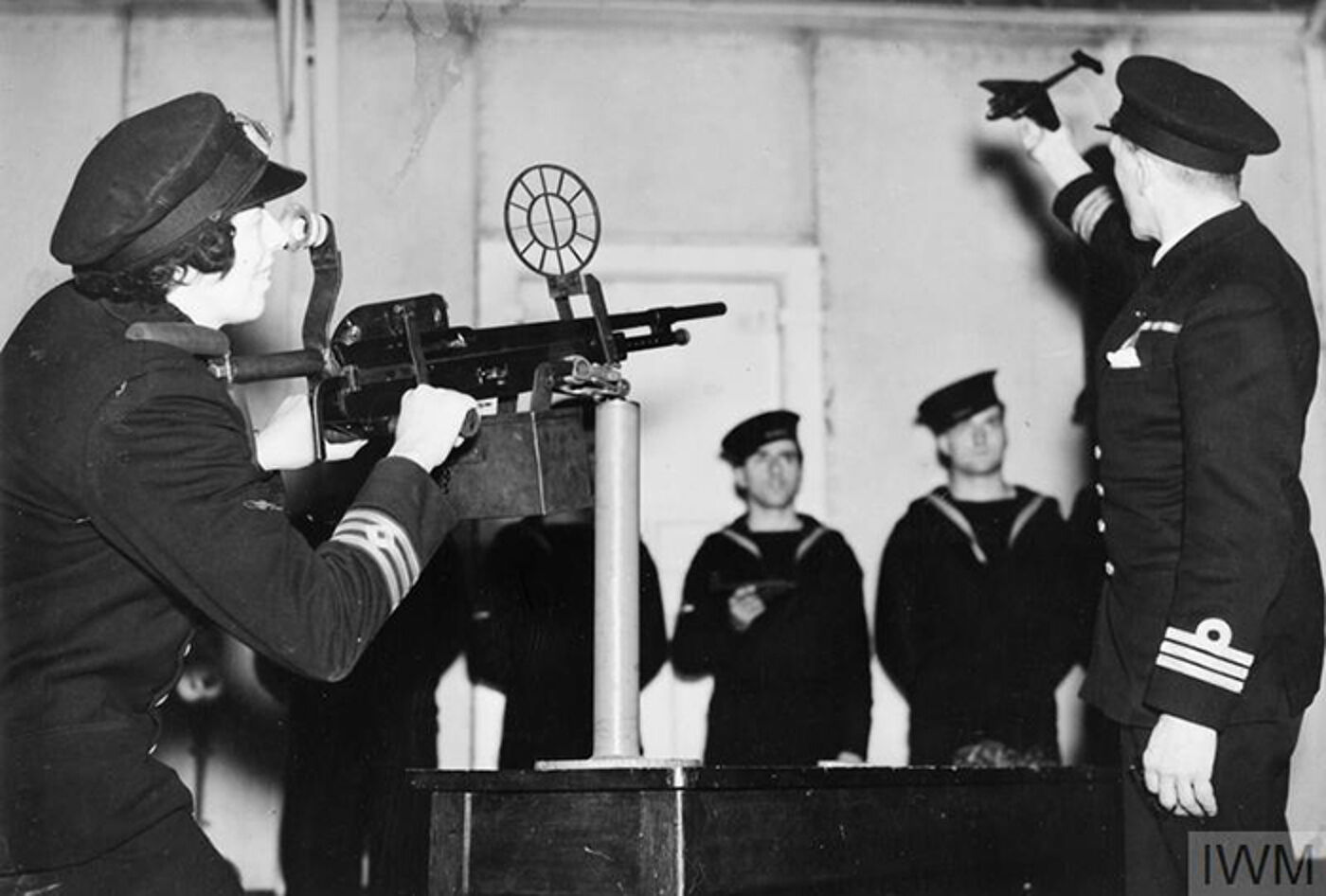Victoria Drummond

Who am I?
Victoria Drummond was the first female marine engineer in Britain. Born into Perthsire aristocracy, Victoria’s godmother was Queen Victoria. One of her grandmothers was an expert wood and ivory turner and taught her this skill. Victoria was determined to become a ship’s engineer from childhood visits to nearby engineering works, but had to wait until she was 21 to make a free choice. The family lost all its money and she and her sisters and brother all had to make their own way in the world. During the Depression years ashore and after her retirement in 1962 she lived with her sisters, Jean and Frances, in London. She was an early member of the Women’s Engineering Society. © Nina Baker
Image: 2nd Engineer Miss Victoria Drummond, MBE, practising shooting with the aid of a model enemy aircraft. © IWM (A 7840A)
I am monumental because...
She began her career as an apprentice in the Northern Garage, Perth, from 1916-1918. To get the essential marine experience, she then moved to the Caledon Ship Works in Dundee where she undertook a full apprenticeship, completed in 1922. Her first ship was Blue Funnel Line’s Anchises, after which she gained her Second Engineer’s Certificate and got a job on British India’s ship, the Mulbera, in 1927. The Depression years were difficult times for all seafarers and she could not get another ship until WW2 broke out, when she got the first of many posts with non-UK ships, on board the Har Zion. She served on many such foreign-flagged ships during and after the war, rising to the rank of chief engineer with a certificate gained abroad, because the UK Board of Trade apparently could not bring themselves to grant her a certificate at that level. She was the first woman marine engineer in Britain and first woman member of Institute of Marine Engineers. During World War II she was awarded the Lloyds War Medal and OBE for her bravery under enemy fire on board the Bonita in 1940. She is commemorated by a Victoria Drummond Room at the IMarEST headquarters in London, and a plaque in Dundee. © Nina Baker




